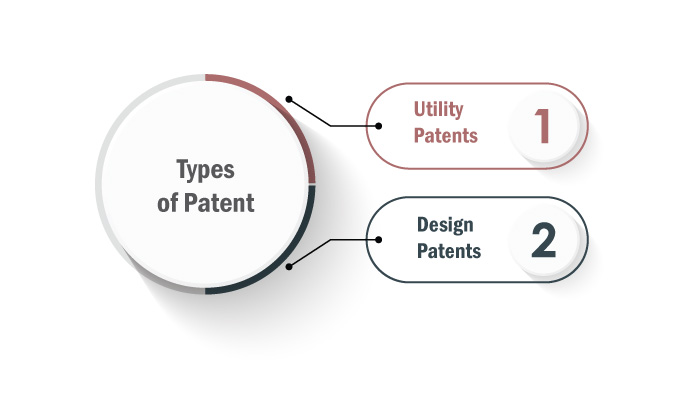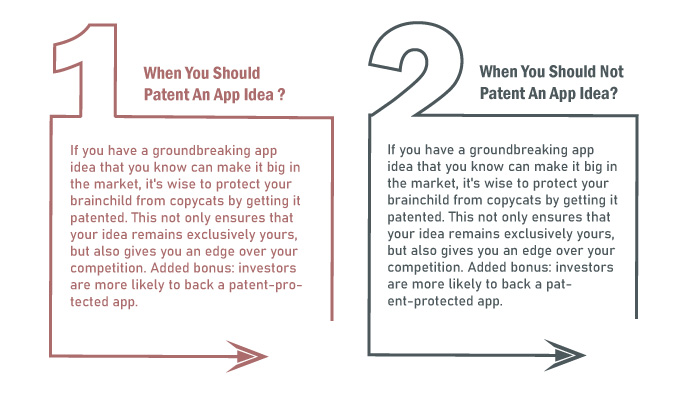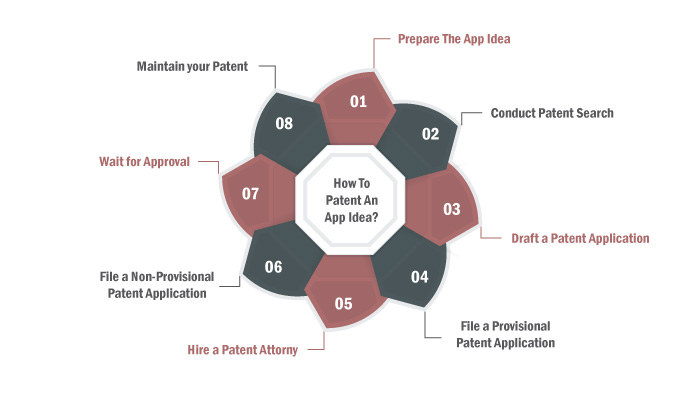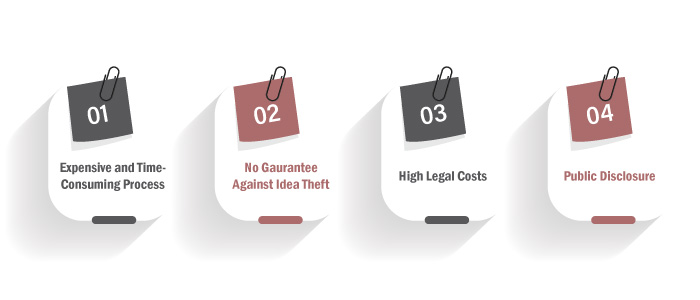Finding a good idea for app development is rare and the first thing that comes to mind is, “Can I Patent An App?”.
Everyone wants to protect their idea and even more so when it comes to a mobile app idea. The reason is that, each day the industry grows more competitive as thousands of new apps are launched.
And the last thing you want to happen is, someone stealing your mobile app idea. This is where the mobile app idea patent comes in.
While patenting an app idea isn’t unheard of, there are many questions surrounding it. For instance, can you patent an app idea, “Should” you patent an app idea, the cost, and so on?
Worry not, because in this blog no question will remain unanswered. Here we shall be discussing all you need to know about the process to patent an app idea.
What is a Patent? Explained
“Patent” is quite a familiar term, if you are in an entrepreneurial mindset.
In legal terms, the term patent refers to a “legal document granted by the government to an inventor or assignee, which gives the holder exclusive rights to prevent others from making, using or selling the invention for a specific period of time, usually twenty years from the date of filing the patent application”
In layman’s term patent is a legal safeguard for your unique idea or product that makes it illegal to replicate it.
This means whether it is an individual or company, they can’t copy the solution if you had patented an app idea. In addition to copying, they can’t claim it as their own either.
You get the gist of it. The concept of a patent is simple enough. As such, there are different types of patents. Let’s see what these are.
Types of Patent

So, there are a few different types of patents that you must know about before you actually decide to patent an app idea.
These are, as mentioned below:
Utility Patents
These patents are granted to inventors who create new and useful processes, machines, articles of manufacture, or compositions of matter. Utility patents are the most common type of patent.
Design Patents
These patents are granted to inventors who create new, original, and ornamental designs for an article of manufacture. The design must be non-functional and purely aesthetic.
Patent Application Types
| Type of Patent Application | Description |
| Provisional Application | A placeholder that allows an inventor to establish a priority date for their invention without filing a complete application. Useful if the inventor is still working on the invention and needs more time to perfect it. |
| Non-Provisional Application | The most common type of patent application. A complete application that includes a detailed description of the invention, claims, and any necessary drawings. |
| Continuation Application | Filed by an inventor who wants to continue pursuing a patent for an invention that was disclosed in a previously filed application. The continuation application allows the inventor to make changes to the original application and to continue the examination process. |
| Divisional Application | Filed when a patent examiner determines that the original application contains more than one invention. The inventor can then file a divisional application to pursue a patent for the other invention. |
| Continuation-in-Part Application | Filed by an inventor who wants to add new information or claims to an existing patent application. The continuation-in-part application allows the inventor to build on the original application and to continue pursuing a patent for the invention. |
Can You Patent An App Idea?
One of the first questions people ask when you speak of patenting an app idea is, “Can you actually patent an app idea?”
Well, the answer to this question is not that simple. The short answer is No & Yes!
You can’t actually patent an app idea alone. The reason is that patent law requires that an invention be a novel and non-obvious solution to a specific problem. An app idea, by itself, is too abstract and general to meet these requirements.
If that were possible, there would only exist a few apps
However, there’s a way around it. If your app idea covers a unique process or solves a super specific problem, then it’s possible. In easy words, if your app will use a new algorithm or technology that has never been seen before, you can patent the app idea.
Speaking of which, there’s an actual eligibility criteria.
Mobile App Idea Eligibility For Patenting
- Is your idea novel and non-obvious?
- Does your idea have a specific and useful application?
- Is your idea adequately described and enabled?
- Does your idea fall under one of the patentable categories?
- Have you conducted a thorough search for prior app ideas?
If you can answer all of these questions is “YES”, you can patent the app idea.
Moving on, now that you know whether or not you can patent an app idea, let’s see whether you should patient an app idea in the next section of the blog.
Should You Patent An App Idea?
People always have second thoughts, asking if should I really do it. Well, this case is no different. There are a lot of people who ask, should you patent an app idea?
Well, the answer is yes and no, depending on a lot of things, as we will discuss later down the line. But before that, let’s see what the advantages that come with it are.
Patent An App Idea To Gain Competitive Advantage
If you have something that others don’t, you naturally have a competitive advantage. The role of the patent here is to protect this advantage.
The reason is that, if your app is something that people love and can earn money, others would want to copy it. And with the help of an app idea patent, you can protect your idea thus protecting your competitive advantage.
Better Digital Asset Protection
Well, well, unique ideas, algorithms, new processes, and so on are valuable digital assets, won’t you agree?
Now, if you have something so much value in a world where you have thousands of preying eyes, you want to protect it. And just like we discussed in the previous point, this is something that patenting an app idea can help you with.
Increased Business Value
Patenting an app idea can actually help you increase the value of your business. Here’s how:
Ask this question “What’s valuable?” and the answer is, something that’s rare. So, how do you create this rarity in the business world? By coming up with something unique and not allowing anyone else to copy it.
So, let’s assume your business has developed a unique technology which has potential to become a huge success in market. And you are the only one who want to sell it and profit from it. This is when patienting comes in.

Now with that understood, let’s move to the next section where we shall be discuss how you can patent an app idea.
How To Patent An App Idea?

So, how do you patent an app idea? Well, it isn’t all that complex.
The process is actually quite simple if you know what you are doing. And to make sure you do, here’s the entire process described.
1. Prepare The App Idea
Let’s start with the first step, that is “how to patent an app idea” is actually preparing.
Well, as it turns out, an idea that’s just in your mind is actually considered something that you can patent. Rather, you need to create a solid proof.
For here, you can take one of the following paths:
- Create detailed documentation for the mobile app development process
- Develop MVP App
- Build A Prototype
And once you have it out of the way, we can actually start the process to patient an idea for an app.
2. Conduct a Patent Search
In the second step, and before we file for patent application, a patent search must be conduct. This is to ensure that your idea is unique and hasn’t already been patented.
Moreover, this can done by conducting a thorough patent search on the USPTO (United States Patent and Trademark Office) website.
3. Draft a Patent Application
When the uniqueness of your idea is confirmed, the next step is to draft a patent application. It goes without saying that, it’s essential to provide a detailed description of your app idea.
This includes how it works, what it does, and its technical specifications.
4. File a Provisional Patent Application
It’s time to file a provisional patent application. You see, a provisional patent application is a temporary application. And it works to secures your filing date with the USPTO.
For instance, it’s a cost-effective way to establish an early filing date for your app idea.
5. Hire a Patent Attorney
It goes without saying that noone does it better than the professionals. Therefore, if you are not “legal” savvy, we highly recommend that you hire a patent
A patent attorney can help you navigate the process and ensure that your patent application is complete and accurate.
6. File a Non-Provisional Patent Application
With all said and done, it’s time to file a non-provisional patent application. It is a formal application that provides a detailed description of your app idea. And it includes technical specifications, how it works, and what it does.
7. Wait for Approval
Now that we have filed NP patent, all we have to do ( and can do ) is wait for approval. The approval will come from USPTO.
Approval can take several months to even years depending on the situation.
8. Maintain Your Patent
Lastly, with the patent approval, it’s time to maintain it.So, how do we do it? the answer is simple, by paying a regular maintenance fees.
In case you fail to pay the fee, the patent will expire and idea or product will become public domain.
If you fail to pay these fees, your patent may expire, and your idea will no longer be protected.
How Much Does It Cost To Patent An App Idea?
It goes without saying that patenting an app idea is crucial step in protecting a intellectual property rights. And also avoiding any future legal dispute.
Now, it’s time to answer the big question! How much does it cost to patent an app idea? Well, the cost to patent an app idea depends on alot of things, there are various factors involved in the process.
To get a better understanding of the same, let’s see what these factors are:
- Complexity of the idea
- Type of patent you are seeking
- Geographic location where you are filing the patent
These are the general factors that affect cost to patent an app idea. Now, if you need a detailed insight on the same, you can contact an attorney.
With this being said, let’s discuss how different types of app patent affect the total cost. These are, as mentioned below:
Types of Patent Applications
1. Provisional Patent Application
Let’s talk about the most basic and most common patent application first i.e. provisional patent application. This costs around $2,000 to $3,500.
2. Non-Provisional Patent Application
Secondly we have the non-provisional patent application. It is a more comprehensive and long-term solution.
The cost of filing a non-provisional patent application can range from $8,000 to $15,000 or more. Thus depending on the complexity of the app idea.
Additional Fees and Charges
Apart from the factors that we discussed above, there are some additional charges that we have to discuss when it comes to app patent costing. Let’s see what these are:
- Patent search fees
- Attorney fees
- Maintenance fees
These fees will add to the overall cost.
Some Downsides Of Patenting An App Idea

Until here, we have discussed the upsides and how-tos of patenting an app idea. And with this out of the way, it’s time to look at some downsides of the same.
Therefore, in this section of the blog, we shall be discussing exactly the same. Let’s get right into it:
1. Expensive and Time-Consuming Process
The very first downside is, expenses and time involved in the process.
It goes without saying that in order to get the app patent, you need to spend alot of time and money in the process. In fact, it might also involve hiring patent attorney among other htings.
And you or your business will be paying for it.
2. No Guarantee Against Idea Theft
We hate to break it down to you, but an app patent doesn’t gurantee no one will steal your idea. There are alot of compliacations here and alot of legal issues.
And there have been cases of people stealing idea patent by changing minute detail.
4. Public Disclosure
This is a tricky one.
If you have an idea, and you patent it, there will be alot of eyes. Now, even if people weren’t paying attention to you, now they are.
And this is one of the biggest downsides.
Conclusion
Before you develop an app, you might consider to patent an app idea. In this blog, we discussed everything you need to know about mobile app idea patenting. And with this, we have come to the end of the blog.
FAQ
Yes, you can sell an idea for an app. However, it’s important to note that ideas alone are not usually enough to secure a sale. You’ll need to have a more fleshed-out concept or prototype before most buyers will be interested.

Niketan Sharma is the CTO of Nimble AppGenie, a prominent website and mobile app development company in the USA that is delivering excellence with a commitment to boosting business growth & maximizing customer satisfaction. He is a highly motivated individual who helps SMEs and startups grow in this dynamic market with the latest technology and innovation.
Table of Contents












No Comments
Comments are closed.